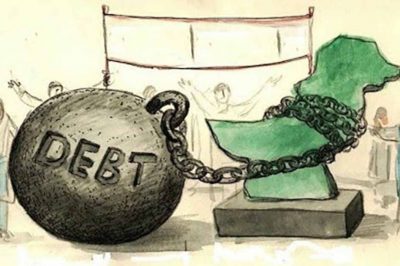Pakistan finds itself grappling with the repercussions of its foreign debt, which have raised significant concerns about the stability and sustainability of its economy. While short-term borrowing from foreign entities may offer temporary relief, long-term solutions are more viable. To tackle this complex issue head-on, Pakistan must adopt a comprehensive approach encompassing capacity building, structural reforms, economic diversification, domestic productivity enhancement, and transformative changes. Only through such multifaceted measures can Pakistan pave the way for a brighter and more resilient financial future.
Structural Reforms
Pakistan’s economic structure needs substantial reform. According to economist Amartya Sen, the key to a country’s financial success lies in the “removal of substantial unfreedoms– economic, political and social.” For Pakistan, this might include easing restrictions on business, investing in human capital, and improving governance and bureaucratic efficiencies. Economic liberalization, as suggested by Milton Friedman, is crucial. Pakistan needs to improve its ease of doing business to attract more foreign direct investment (FDI). This could be achieved by easing regulations, ensuring contract enforcement, and reducing bureaucratic hurdles.
Diversification and Enhancement of Domestic Productivity
Pakistan’s economy heavily relies on a few sectors, such as agriculture, textiles, and remittances. Such over-reliance makes the economy vulnerable to shocks in these specific sectors. Economic diversification is recommended by economists like Jeffrey Sachs to boost toughness and decrease susceptibility. To lessen its financial exposure, Pakistan should work to develop other industries, including technology, manufacturing, and services.
Further, the country should focus on enhancing domestic productivity. Investing in education and skill development is a practical strategy for achieving this. Economists like Gary Becker have widely reported the commitment of human resources to financial growth. Training spending would furnish a labor force with more expertise and the capacity to influence the economy emphatically.
Strengthening Institutional Capacity
Effective institutions are essential to a nation’s economic growth. In their book “Why Nations Fail,” economists James Robinson and Daron Acemoglu make the case that countries thrive when their economic structures are inclusive and widely dispersed possibilities. Pakistan needs to build more robust and transparent institutions to strengthen its economy. This could be achieved by enhancing accountability, ensuring transparency, and promoting meritocracy.
Fiscal Discipline and Debt Management
Excessive borrowing without sound fiscal management can lead to a debt trap, as Carmen Reinhart and Kenneth Rogoff warned in their seminal work ‘This Time is Different’. Thus, Pakistan must adopt prudent fiscal management and effective debt management strategies. This would involve controlling unproductive expenditures, broadening the tax base, improving tax collection, and prioritizing spending on human development and infrastructure.
Fostering an Entrepreneurial Culture
Entrepreneurship can play a critical role in generating jobs and boosting economic growth. According to economist David Audretsch, entrepreneurship leads to increased innovation, which is crucial for economic development. Pakistan should therefore encourage an entrepreneurial culture. This can be done by supporting start-ups and small businesses through tax incentives, access to finance, and business development services. Moreover, Pakistan can invest in entrepreneurship education at school and university levels to prepare young generations to become future entrepreneurs. As Robert Litan proposed, teaching entrepreneurship instills entrepreneurial thinking and encourages innovative problem-solving skills.
Improving Energy Security
Energy insecurity is a significant challenge for Pakistan’s economy. It affects industries’ productivity and hinders economic growth. Therefore, achieving energy security should be a priority. According to energy experts like Fatih Birol, energy security can be improved by diversifying energy sources and investing in renewable energy technology. Pakistan has a lot of unrealized potential for capturing solar and wind energy. Utilizing these renewable resources might help the country become less reliant on importing fossil fuels from outside. As a result, this would improve energy security and open up new employment prospects in the renewable energy industry.
Investing in Research and Development
A critical factor in economic growth is research and development (R&D). Paul Romer’s endogenous growth theory holds that investment in knowledge, primarily through R&D, is crucial to economic growth. Pakistan should spend more on research and development (R&D) to take advantage of these possibilities, especially in industries like technology, healthcare, and renewable energy that have the potential to spur future growth. Additionally, there should be incentives to encourage private businesses to take an active role in R&D initiatives.
Promoting Foreign Direct Investment (FDI)
Foreign direct investment can bring capital, technology, management skills, and access to new markets, all crucial for economic development. Economist Theodore Moran asserts that FDI can stimulate economic growth if the host country has a minimum threshold of human capital, infrastructure, and a market-friendly policy environment. For Pakistan, fostering a favorable climate for FDI entails guaranteeing political stability, upholding consistency in policy, enhancing infrastructure, and safeguarding investors’ rights. The nation may concentrate on luring FDI into the manufacturing, technology, and service sectors, generating employment, increasing exports, and fostering economic growth.
Expanding Exports
Increasing exports can be a vital strategy to improve Pakistan’s balance of payments, earn foreign exchange, and stimulate economic growth. Paul Krugman posits that economies can leverage comparative advantages to expand exports. Pakistan has comparative advantages in agriculture, textiles, and information technology and should aim to increase exports. Furthermore, Pakistan can explore new markets for its exports. While traditional markets in the US and Europe remain essential, emerging markets in Africa, Latin America, and Asia can offer significant opportunities.
Building Social Safety Nets
Economic reforms, while necessary, can sometimes lead to short-term hardships, particularly for vulnerable sections of society. Therefore, alongside these reforms, Pakistan must strengthen its social safety nets. Economists like Esther Duflo and Abhijit Banerjee suggest that social safety nets, such as cash transfer programs, relieve vulnerable populations and contribute to economic stability. Pakistan’s Benazir Income Support Program (BISP) is one such initiative that can be further strengthened. Moreover, new social safety programs focusing on healthcare, education, and skill development can be introduced.
Also Read: Pakistani Embassy in UAE honored Boxer Taimoor Khan
Pakistan’s journey toward economic stability and prosperity is undeniably achievable. By adopting a comprehensive, multi-dimensional strategy encompassing substantial structural reforms, economic diversification, and strengthening of institutions, the country can navigate the complexities of this ambitious endeavor. Investment in human capital development and research & development is vital, alongside fostering a culture of entrepreneurship.
The country’s fiscal discipline needs to be buttressed, and it should make concerted efforts to secure energy resources, which are the lifeline of any robust economy. Expanding exports and attracting foreign direct investment are critical elements of this growth model while simultaneously building a reliable social safety net for its citizens.
There are no quick fixes; the path demands unwavering political will, consistent policy implementation, and unequivocal public support. Pakistan should focus on the drawn-out objective of vigorous and feasible development as it changes from an obligation ward to a self-supporting economy. These organized and predictable drives can make the foundation for Pakistan’s monetary future, directing it toward long-haul improvement and thriving.
** The opinions expressed in this article are solely those of the author and do not reflect the views or position of World Affairs Insider. The organization neither endorses nor takes responsibility for the content of this article and its accuracy.







